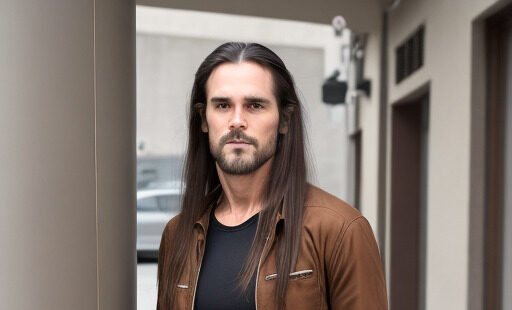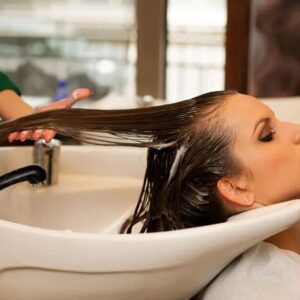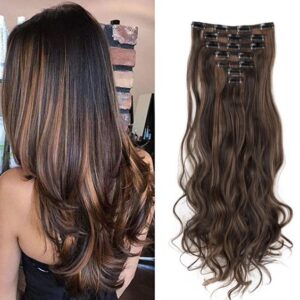Can You Bleach Wet Hair: Bleaching hair can be a transformative experience, allowing for vibrant new colors and a fresh look. However, the process can be daunting, especially when it comes to understanding the nuances of hair care. One common question that arises is whether it’s safe or effective to bleach wet hair. In this comprehensive guide, we’ll explore the intricacies of hair bleaching, the impact of moisture, and whether you can—or should—bleach wet hair.
Understanding Hair Bleaching
What Is Hair Bleaching?
Hair bleaching is a chemical process used to lighten the color of the hair. It involves breaking down the natural pigment (melanin) in the hair shaft, which results in a lighter color. This is typically achieved through a mixture of bleach powder and developer, which, when applied to the hair, creates a chemical reaction that lifts the color. Read about How Much Are Hair Extensions
How Does Hair Bleaching Work?
The bleaching process works through oxidation. When the bleach mixture is applied, it penetrates the hair cuticle and reacts with melanin. This reaction lightens the hair by breaking down the pigment. The strength of the developer and the bleach powder determine how light the hair will become.
Key Ingredients in Bleach
The primary components of a hair bleach are hydrogen peroxide and ammonia. Hydrogen peroxide acts as the oxidizing agent that lifts the color, while ammonia helps to open the hair cuticle, allowing the peroxide to penetrate more effectively.
The Science Behind Wet Hair
What Happens When Hair Is Wet?
When hair is wet, its structure changes slightly. Water swells the hair shaft, making it more pliable and easier to manipulate. However, this can also make the hair more porous and susceptible to damage. Wet hair also affects how products are absorbed and processed.
Effects of Moisture on Hair Structure
Moisture can impact the effectiveness of hair treatments. Wet hair is more vulnerable to damage because the cuticle layer is raised, which can lead to uneven application and potentially more significant damage from the bleach. Additionally, the chemical reactions involved in bleaching may be altered when the hair is wet.
Can You Bleach Wet Hair?
The Pros of Bleaching Wet Hair
Some people prefer to bleach wet hair because it can help distribute the product more evenly. The moisture can make the hair more flexible and easier to work with. Additionally, wet hair may absorb the bleach solution better in some cases.
The Cons of Bleaching Wet Hair
On the flip side, bleaching wet hair comes with several risks. The primary concern is that the raised cuticle can lead to uneven processing and increased damage. Wet hair is more porous and can absorb more bleach than intended, which can result in over-processing and potential breakage.
Professional vs. At-Home Bleaching
Professionals often have the experience and tools to handle bleaching wet hair more effectively, including precise application techniques and monitoring. At-home bleaching might lack the same level of control, increasing the risk of unsatisfactory results or damage.
Bleaching Dry Hair: A Comparison
Benefits of Bleaching Dry Hair
Bleaching dry hair can offer more control and reduce the risk of over-processing. The hair cuticle is in a more closed state, which can help prevent excessive damage. It also allows for a more accurate application and monitoring of the bleach.
Drawbacks of Bleaching Dry Hair
However, dry hair can be more resistant to the bleach, potentially requiring a longer processing time or more product. It may also be less flexible and harder to work with compared to wet hair.
Preparation for Bleaching Wet Hair
Assessing Hair Condition
Before bleaching, it’s crucial to assess the condition of your hair. Hair that is damaged or overly dry might not handle the bleaching process well, leading to increased breakage and uneven results.
Choosing the Right Bleach and Developer
Select a bleach and developer suitable for your hair type and desired level of lift. For wet hair, a lower volume developer might be appropriate to prevent over-processing.
Steps to Prepare Your Hair
Ensure your hair is clean but not freshly washed. Slightly damp hair is ideal for many bleaching processes. Also, perform a strand test to see how your hair reacts to the bleach.
Step-by-Step Guide to Bleaching Wet Hair
Prepping Your Hair and Scalp
Before applying bleach, protect your scalp and skin with a barrier cream. Ensure your hair is evenly damp, not dripping wet, to help with the even application.
Mixing the Bleach Solution
Follow the instructions provided with your bleach kit. Mix the bleach powder and developer in a non-metallic bowl. Ensure the mixture is smooth and well-combined.
Application Process
Apply the bleach evenly from roots to ends using a brush or applicator. Be cautious of over-applying or missing sections. Work quickly but carefully.
Monitoring and Rinsing
Monitor the processing time closely. Rinse the bleach out thoroughly once the desired level of lift is achieved. Use a gentle shampoo and conditioner designed for color-treated hair.
Aftercare for Bleached Hair
Essential Post-Bleaching Treatments
After bleaching, your hair will need extra care. Use deep conditioning treatments and nourishing masks to restore moisture and strength. Avoid heat styling and harsh products.
Avoiding Damage and Maintaining Health
Keep your hair healthy by avoiding excessive washing and using products designed for color-treated hair. Regular trims will help manage split ends and maintain overall hair health.
Common Mistakes to Avoid
Overlapping Products
Avoid overlapping bleach applications, as this can lead to excessive damage and uneven color.
Incorrect Application Techniques
Ensure even application to prevent patchy results. Using proper techniques and tools can make a significant difference.
Skipping Aftercare
Neglecting aftercare can lead to dry, brittle hair. Invest in good quality aftercare products to maintain your hair’s health.
Alternative Methods and Products
Pre-Bleach Treatments
Consider using pre-bleach treatments to strengthen your hair and reduce damage. These can help prepare your hair for the bleaching process.
Other Lightening Options
Explore other lightening options, such as highlights or balayage, which might be less damaging than full bleach applications.
Consulting a Professional
When to Seek Professional Help
If you’re unsure about the bleaching process or have concerns about your hair’s condition, consulting a professional is a wise choice. They can provide personalized advice and ensure the best results.
Benefits of Professional Bleaching Services
Professionals have the expertise to handle various hair types and conditions, providing a higher likelihood of achieving the desired results without causing damage.
Conclusion
Bleaching wet hair is a topic that sparks much debate among hair enthusiasts and professionals. While there are some benefits, such as ease of application and even distribution, the risks often outweigh the advantages. Wet hair can be more porous and susceptible to damage, which might lead to uneven results and increased breakage. Generally, bleaching dry hair is considered a safer and more controlled method.

Meet Nathan Evans, an insightful writer whose passion for exploration and understanding shines through his compelling articles. Nathan’s diverse portfolio spans topics ranging from environmental sustainability and global politics to culture, technology, and beyond. With a unique blend of meticulous research and engaging prose, Nathan captivates readers by shedding light on both contemporary issues and timeless human experiences. His articles provoke thought, inspire curiosity, and foster a deeper appreciation for the complexities of our world. Whether unraveling the impact of emerging technologies or examining cultural phenomena, Nathan’s writing offers readers a journey of discovery and enlightenment.



